Earlier this month, our home-team squad of adventure racers, Team GearJunkie/YogaSlackers, took fourth place in the tough, 500+ mile Expedition Idaho Race, a nonstop feat of trekking, mountain biking, paddling, and navigation through Idaho’s remote panhandle region. In this post, team captain for the race Jason Magness gives the lowdown on the best gear tested in the week-long event, including to-be-released and prototype equipment the team trusted for speed, safety, (some) comfort, and even survival on the race’s harsh and epic course.
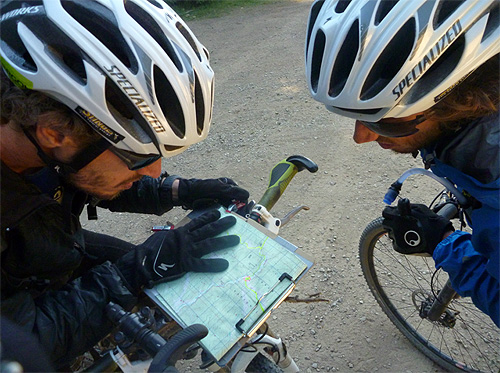
Breathable Bivy Bag — Essentially a cross between a space blanket and a bivy sack, the SOL Escape Bivvy from Adventure Medical Kits promises to reflect the user’s body heat back (like a space blanket), to be durable, and to be waterproof and breathable. Big promises. But this bag, which will cost $50 in 2012 when the company ships to stores, delivered big time in the Idaho race.

After using the bivy for five nights of consecutive bivying (with no sleeping bags, just insulated jackets), and including a test in light rain and temps that dropped low enough for ice to form, I can say hands-down that the SOL Escape Bivvy is the finest minimal/emergency bivy solution I have ever seen. We woke up dry even after going to bed wet in this truly breathable bag! It’s about 8 ounces rolled up, and it is well worth the weight in your pack.
Long-Shining Headlamp — In a week-long race where we were in the dark for nearly 50 hours of the event — and on the move for much of that time — having a good light system is crucial. The Fenix HP11, which costs $65, delivered with its four light settings, though I found I rarely needed to go above the blinding “moderate” setting. The result? Super long battery life for this head torch.

You get about 40 hours of shine at the moderate setting with 4 AA alkaline batteries, and more with lithium. When we needed more blaze, the lamp’s turbo mode blasted out an approx. 400-lumen beam — so much light that I couldn’t outrun the beam even on a fast bike ride down a mountain pass on singletrack at night. A final note: The Fenix HP11 headlamp is definitely waterproof. Our teammate Daniel Staudigel dropped his camera in the race and had to swim 15 feet down with the headlamp into the murky cold depths of Lake Pend Oreille to retrieve it.
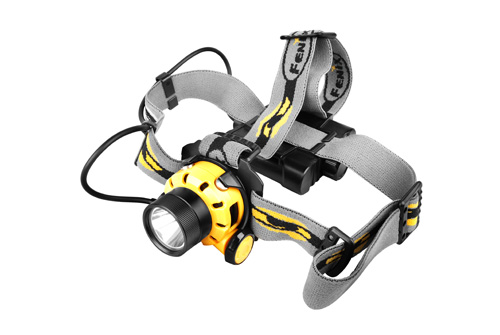
Fast-Rolling Tires — In one of the pre-race updates we were warned by mountain bike hall of famer Mike Kloser (who worked on the course design in Idaho) that the terrain was a bike tire “side-wall killer.” He recommended bringing extra tires on the race. We didn’t want to tote that extra weight, so instead we called Specialized and asked for the company’s most durable tubeless tire. A couple days later, we were mounting the company’s Fast Trak LK Grid UST tires on three bikes, which cost $60 apiece. In the race, on the very first bike leg, we traversed a trail with sections of jagged, football-size stones, and I was nervous. But the tires held up amazingly well. Seven days and more than 250 miles of riding later, I’d never given the tires another nervous thought.
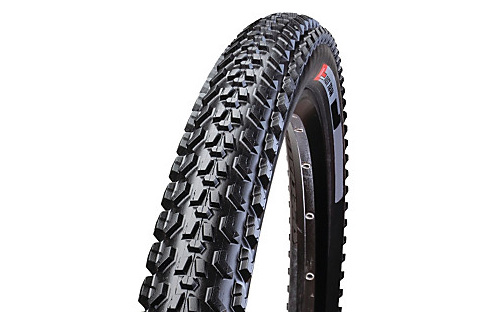
With low rolling resistance, good traction on loose-gravel fire roads, twisty singletrack, and rocky descents, the Fast Trak LK Grids really performed. What more would we want? They’d look really cool with “GearJunkie/YogaSlackers” printed on the sidewalls!
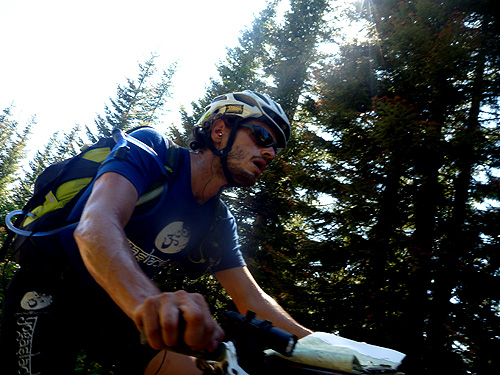
Tiny Pack-Rafts — In a big race in Patagonia this past winter Team GearJunkie/YogaSlackers used blow-up camp pads as pseudo-rafts to float a whitewater river ad hoc when all the other teams had to trek through thick brush. For Idaho, we got more serious about our “flotation devices,” and we brought pack-rafts from Alpacka. The company makes a line of small, packable rafts that weigh as little as 3.5 pounds. But for Idaho, Alpacka built our team prototype rafts that were even smaller and lighter. The one-off “Ghost” model pack-rafts weighed an incredible 2.1 pounds each, and they rolled up small. We inflated them on one trekking section and paddled across a lake — saving eight miles of hiking (!) and getting far ahead of the teams on their feet with our watery short-cut.

The Alpacka “Ghost” prototypes have a new shape with more flotation than the old boats — but they use less material. On our prototype boats, the top-secret material was some sort of multi-layer sil-nylon stuff on one boat, and a weird DuPont Tyvek-like fabric on the other. Both boats were super stripped down — no seat, no skirt, and only one lash point. On the race we trashed them, but the material held strong. We hope Alpacka brings this stout and minimal backcountry boat to market. It is one of the neatest “tools” for traversing the wilds that we have ever seen.
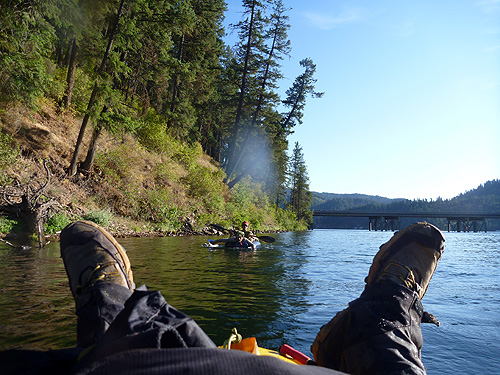
Salty Energy Bars — We pimped these bars last month with our coverage of the best new products at the Outdoor Retailer trade show. The Idaho race gave us an opportunity to do a real-world “taste test,” and we’re happy to say the bars lived up to our original hype.
The amaranth-based “savory”-flavored bars were a perfect compliment to the mass amounts of sweet-flavor energy bars we carried with us. Packing over 200 calories a bar — and with flavors including Coconut Curry, Parmesan and Romano, Barbecue, and Wasabi — the whole team ended up fighting over the remaining few bars on the last day of the race. One caveat: Make sure to have water on hand as some of the flavors are a bit dry. They cost $19 for a box of 12 bars at Journey Bars’ online store.
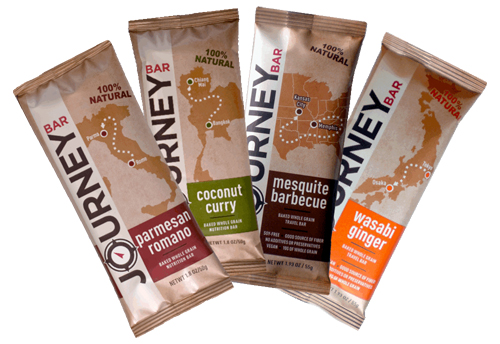
New 29er on The Course — A week before the race, one of our teammates, Andy, broke down and shelled out the cash for a new Ellsworth Evolve SST 2, a dual-suspension mountain bike with 29-inch wheels. It was assembled in San Diego and shipped right to the race start — his first pedal strokes were around the parking lot in the minutes before the gun went off. Not a good plan. But during the event, which included more than 250 miles of some of the most difficult riding we’ve seen in this sport, the bike performed almost without flaw.
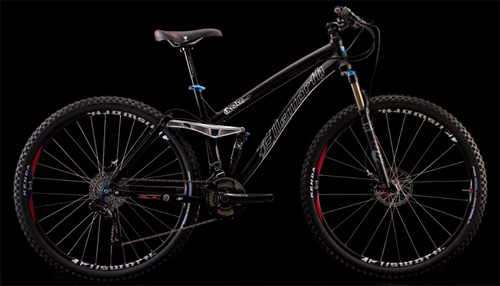
Andy was nervous about keeping up with Daniel and I, and especially on the course’s steep and rocky technical downhills. (In the end, the difficult biking section claimed several victims from other teams, including an accident that resulted in two broken vertebrae and a required helicopter extraction!) Team GearJunkie/YogaSlackers rode away unscathed, and Andy says his bike made a huge difference for him. Ellsworth touts the Evolve SST bike has a frame geometry that “eliminates the clumsy feeling of many 29ers.” It has an integrated seat tube to reduce weight and other nice touches. “I am a shitty, scared rider,” Andy lamented at one point at a low moment near the end of a particularly hard ride, “but this bike just floats through everything.”
—Jason Magness is a contributing editor at GearJunkie.com and a founding member of Team GearJunkie/YogaSlackers. Follow the team as they race around the planet this year on our newly-launched team micro-site.
Related Content:
> Expedition Idaho: 4th place for Team GearJunkie/YogaSlackers!






